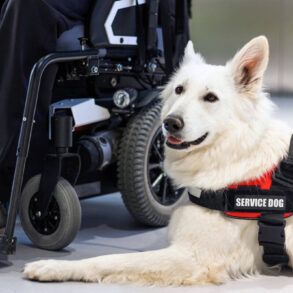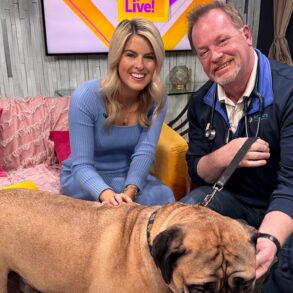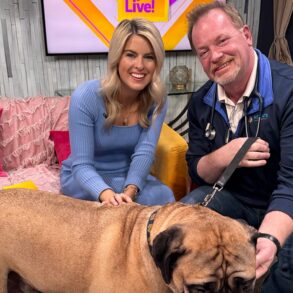According to a national survey conducted by the American Pet Products Association, an estimated sixty-six percent of U.S. households, or about 86.9 million families, own a pet.
But “own” is a misleading term, pets are companions who share our home and life. They’re family. And we take care of family, through routine shots and “fixing,” through accidents, health issues and old age.
That’s becoming more and more expensive: pet care costs are going up.
Veterinarians are seeing a marked increase in their operating costs, especially after the pandemic—costs that are passed along to their clients. Private equity investments into providers and practices are also driving rising costs to generate profits.
According to the Bureau of Labor Statistics, the price of urban veterinarian services rose has risen recently. In fact, over the past decade, pet veterinary care has risen more than 60 percent, well outpacing inflation.
For many families, paying for an accident or a life-threatening or chronic disease can be out of reach, leading to difficult decisions. Families often face choosing between financial ruin or heartbreaking choices.
So how do you pay for unexpected bills? Some pet owners will set aside a monthly amount as an emergency fund, while others may take out a loan or a limited no-interest credit card. For a growing number of households, pet insurance has become a regular monthly expense.
Pet insurance can help you manage unexpected vet bills, ensuring your pet gets the best care possible without adding a financial burden to your family.
Pet insurance operates on the same model as people policies, you pay a monthly premium, and when your pet needs care, you visit the vet, pay the bill and submit a claim to your provider, who reimburses you for a portion of the costs based on your policy’s coverage and deductible.
While pet insurance has existed outside the U.S. for over a hundred years, it wasn’t until 1982 that Lassie, the famous TV collie, received the first pet insurance policy issued in here the states. Today, the North American Pet Health Insurance Association, (NAPHIA), reports the total number of pets insured in the U.S. at year-end 2023 was nearly 5.7 million, a 17 percent increase over 2022.
Depending on where you live and the age of the pet, the average accident and illness premium for dogs was $56 a month and $32 a month for cats.
There are three basic pet health insurance types you can consider, Accident-Only Plans, Accident and Illness Plans and Pet Wellness Plans.
PawlicityAdvisor, is an online pet resource center founded to help pet owners everywhere find the right insurance at the right price. Find a comparison chart to help you choose the best policy for your household.
The best pet insurance offers comprehensive coverage for accidents, illnesses, and routine care. Like selecting insurance for yourself, look for a high reimbursement rate, low deductibles, and no caps on payouts. Quick claim processing and customer service should also be considered. For dogs, ask about coverage for breed-specific conditions. Consider preventative care and look for options for wellness visits to keep your pet healthy.
Is Pet Insurance Worth It? Consumer Reports’ first-ever ratings of pet insurers can help you decide whether buying coverage makes financial sense, or can provide peace of mind.
Watson, a twelve-and-a-half-year-old Airedale Terrier, was insured as a puppy for a reasonable $25 a month. “Our vet recommended it,” said “owner” Mark C. “We immediately signed up because it gets more expensive as they get older.” In fact, as she aged, her premiums went up sharply, to $500 a month.
Was it worth it? “We didn’t use the insurance until the last couple of years, but because we had the insurance, we still have her!”
Watson lives on the 39th floor of a Philadelphia high-rise, blocks away from one of the nation’s premiere teaching veterinary hospitals. “She’s been to the ER three times in the past two years, the time for a heart issue where she had to stay overnight for observation,” Mark remembers. That cardiac stay cost nearly $3,000, and the ER visit was another $1,000. Her next visit was for Vestibular disease, a type of vertigo that can cause a sudden loss of balance and disorientation. Her care team grew to include a neurologist, as well as the cardiologist, a medical vet and her original attending vet. One medication alone costs over $400 a month, and every six months she wears a monitoring vest for 72 hours to check her heart rate.
“We wouldn’t do anything crazy,” Mark says. “If she weren’t eating, or couldn’t walk or enjoy her life, it would be a different story. But she’s getting such good care because of the insurance, she’s doing great!”
Laura H considered pet insurance, her own carrier offered it, but decided instead to set aside the monthly premium cost and hope that would cover any unexpected vet care. Unfortunately, when her favorite cat, Ratso, was diagnosed with cancer, her savings were nowhere near the actual expense.
Laura researched Ratso’s cancer and probable outcome and compared costs before deciding on each step of her treatment. In the end, she spent over $5,000 each for surgery and radiation treatments, and another $16,000 in chemotherapy. “I spent nearly $30,000. I could have used that towards a down payment on a house, or I could save Rats. She was worth it.” She would later spend an additional $10,000 for kidney surgery for another cat.
Laura was fortunate, friends donated to the cause and she applied for a CareCredit card, making sure to pay off the balance before the promotional interest-free sign-up period ended.
Accepted by providers, pharmacies, and retailers across the country, CareCredit is one of several healthcare credit cards that can be used for a range of medical care for you, your family, or your pets. Major banking institutions and organizations such as AARP also offer the cards and applications can often be found at your pharmacy or doctor or vet’s office. For the uninsured a medical credit card that can be a good idea if you can’t pay for a medical expense upfront, you get a 0% intro APR offer and pay off the balance before the promotional period ends and you have no other payment options.
These cards offer flexible financing options, often with a sign-on promotional offer of no interest if paid off within the allotted window. But be aware, the promotional period on medical credit cards is deferred interest and the interest starts adding up as soon as you make the purchase. If you still have a balance at the end of the promo period, you have to pay all of that retroactive interest. The interest rate charged? At CareCredit it’s 26.99%. For some consumers, a regular credit card with an introductory 0% interest rate could make better sense if its interest rate after the introductory offer is lower.
Personal finance company WalletHub offers a consumer guide to major healthcare credit card providers to help you make your most informed decision before applying.
Finally, don’t forget the value of practicing preventative care. While you can’t predict accidents or prevent a life-threatening diagnosis, you can do your best to keep your pets healthy as they age and reduce their risk of chronic health conditions. Keep your dog on a leash and your cat indoors. Maintain your pet at a healthy weight with exercise and a balanced nutritious diet and stay on top of their vaccinations and flea and tick protection. Remember that spaying or neutering your pet offers many long-term health benefits.
This post was originally published on this site be sure to check out more of their content.







































